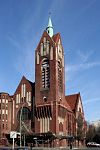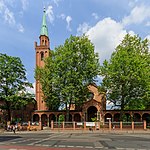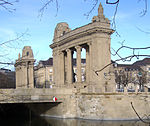Gesellschaft zur Verfolgung von Urheberrechtsverletzungen e.V.

The Gesellschaft zur Verfolgung von Urheberrechtsverletzungen e.V. (GVU, Society for the Prosecution of Copyright Infringement) is a registered association under German law. According to its own description it works for the video game industry and film industry and helps to protect intellectual property and to counter the illegal distribution of copied materials. For this purpose, the association cooperates with the Motion Picture Association of America (MPAA).The GVU was founded in the spring of 1984 and entered the register of associations in February 1985 for the first time. The headquarters were located first in Hamburg, since 2008 they have been in Berlin-Mitte. The GVU became known to a wider public by participating in campaigns such as "pirates are criminals“ and investigations in the Kino.to case.
Excerpt from the Wikipedia article Gesellschaft zur Verfolgung von Urheberrechtsverletzungen e.V. (License: CC BY-SA 3.0, Authors, Images).Gesellschaft zur Verfolgung von Urheberrechtsverletzungen e.V.
Alt-Moabit, Berlin Moabit
Geographical coordinates (GPS) Address Nearby Places Show on map
Geographical coordinates (GPS)
| Latitude | Longitude |
|---|---|
| N 52.523983333333 ° | E 13.328111111111 ° |
Address
Alt-Moabit 61
10555 Berlin, Moabit
Germany
Open on Google Maps








